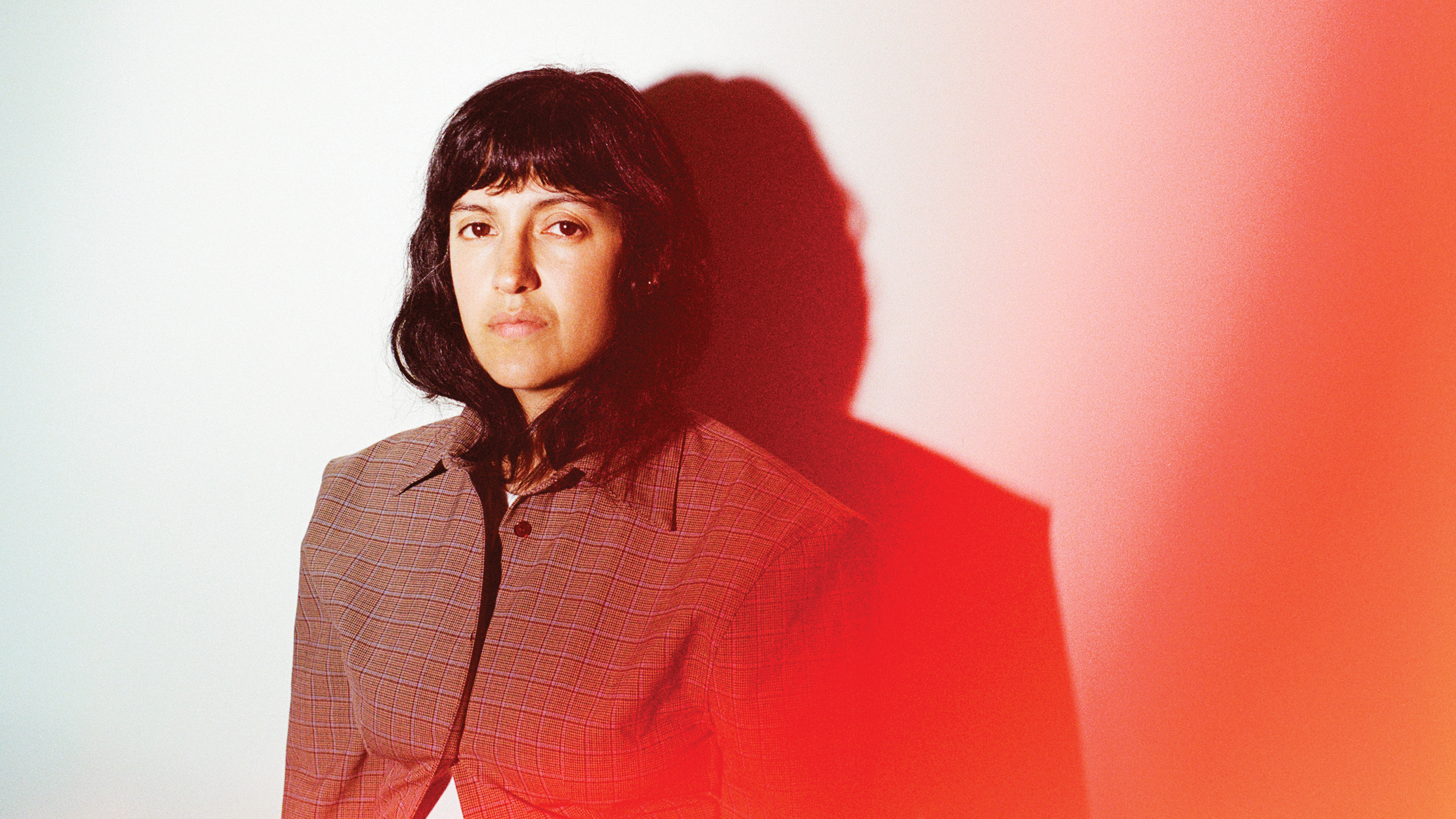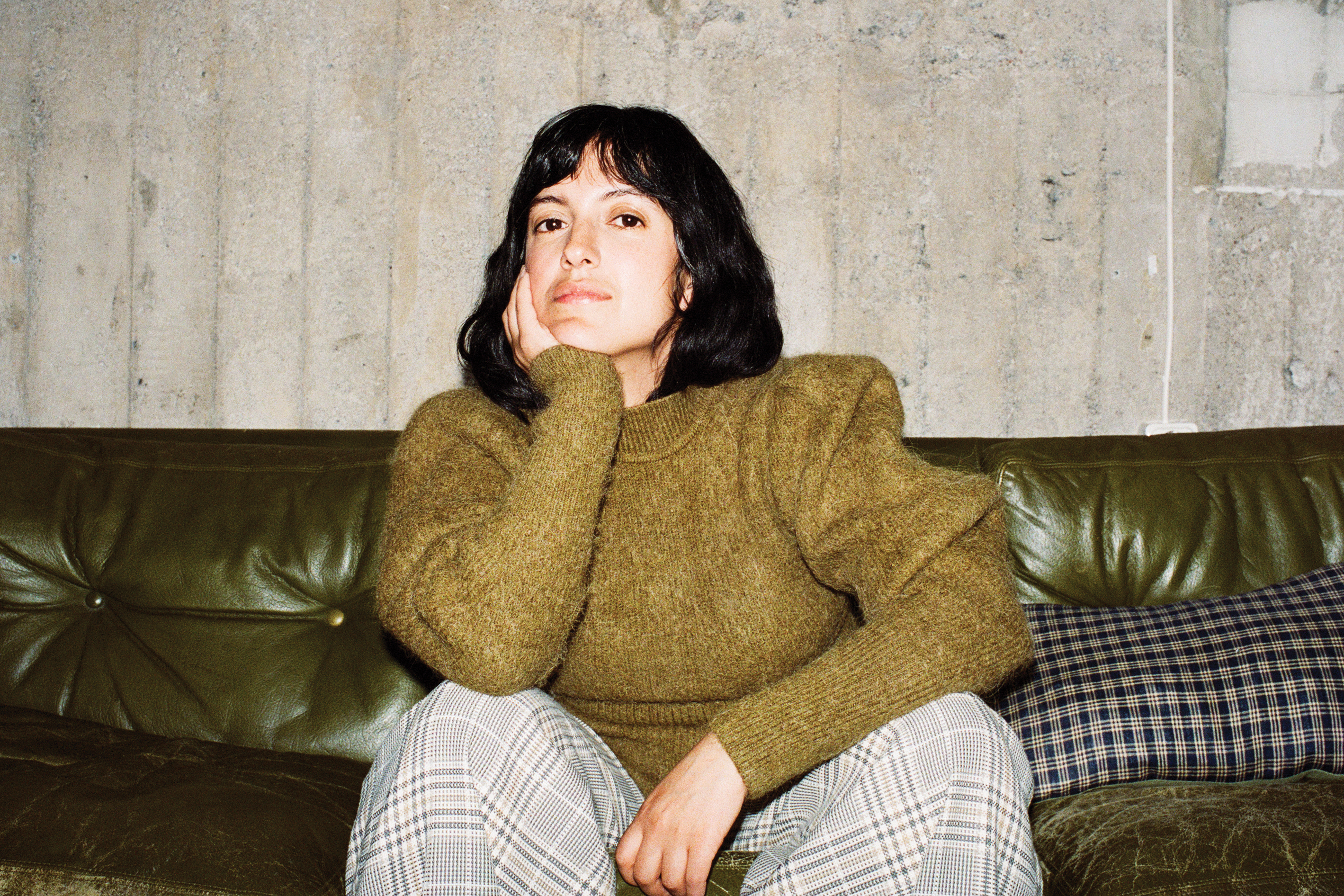Shida Shahabi: "Computers changed my perception of how one could manipulate sound. I could make it strange-sounding in a way that I hadn’t been able to before"
Fusing electronic processing and classical textures, Shida Shahabi is claiming her own calm space in music

Shida Shahabi’s music is a hypnotic mix of vast piano and cello sounds with mesmerising, textured drones. It’s subtle, unhurried and spacious, probably a far cry from her background, raised as she was by Iranian parents during the ’90s in Stockholm with a soundtrack of Persian pop, punk and grunge.
Shida would eventually veer towards the darker, deeper and arguably more thoughtful leanings of The Cure, Cocteau Twins and My Bloody Valentine, as she strove for her own sound. Her 2018 debut release Homes was warmly appreciated by critics who described her as ‘a bold new voice’. She now has a stripped-back approach to her music which is matched by a minimal studio setup.
Shida believes we could likely all finally finish those tunes if we just flexed that finishing muscle a little more. Here she details how that lightweight production process can lead to a heavyweight, emotional sound. She also expands on how to embrace the unknown: “that vagueness can sometimes surprise you, I appreciate it when I don’t entirely know where it is heading…”
Tell us a little about what you do and your musical background…
“I work as a composer and musician, and am based in Stockholm where I was born. I’ve been singing and playing piano and keyboards since I was about nine. I got a Yamaha keyboard from my aunt around that time, too, which gave another level to my interest and I started spending more time playing. That instrument had a built-in drum machine and some fun presets, which was mind-blowing for me at that time.
“I picked up a big interest in listening to music and going to concerts as a teen, spending a lot of time looking for records, making mixtapes and finding new music. I started playing with others when I was about 20, mostly for fun. But it started becoming a paying job and something I took seriously when I was 24. I am now almost 34 and I just keep on doing things, hoping that I will be able to continue for a long time.”
When would you say you started to become successful, making a living from music?
Want all the hottest music and gear news, reviews, deals, features and more, direct to your inbox? Sign up here.
“Ten years ago when I started freelancing as a musician. The practice took more space in my life then, and I suddenly had the time to think about what I wanted to do. It took a while for me to find my own way of doing music seriously; it was a struggle for a long time. So I focused on finding commission work in theatre and dance. The work became a bit more practical with collaborations and deadlines, and I could set the self-criticism aside and focus more on the practice of music making.”
What is your overall philosophy or approach when it comes to music?
“It’s hard to pin down in a simple way, but curiosity, playfulness and spontaneity are very important for me when doing music. Even if it can get frustrating in a process, I appreciate it when I am writing/playing and I don’t entirely know where it is heading. That vagueness is something that can surprise you in the results you get. Not always in a great way, of course, but there are times where it can really create wonderful worlds of sound.”
When did you discover the route to computer music-making, and how has it changed the way you work?
“I discovered it when I studied in art school. I had been working with hardware (effect pedals and instruments), but this was something different. It was a slow and long process of just understanding what the different effects and tools did to a sound. That really changed my perception of how one could manipulate sound and how to produce things. I could tweak and focus on specific things and make it more strange sounding in a way that I hadn’t been able to before.”
Tell us about the gear in your studio.
“I’m trying not to have a lot of stuff, to be honest. It has a way of distracting me, when too much stuff is around. I prefer to keep my studio spacious and bright. Luckily I’ve been able to borrow things when I am in a phase where some specific gear is needed. I have a Roland Juno-60, a Korg Poly 800 and Yamaha CS-01, which are used often in the studio. I also have my 120-year-old Malmsjö piano and a Roland RE-501 tape echo that I use pretty frequently, too.”

There’s some great, classic hardware in there. What about your favourite plugin instruments and effects?
“I like Kush Audio’s Electra DSP EQ. It gives a nice colour and warmth to the sound. It just makes things sound clearer and fuller, and gives it a certain touch.
“I like using the software version of Pultec EQP1A a lot, too. It gives a nice presence both in the low- and high-end registers and it can enhance really nice airy frequencies in sounds in a way that I like.
“Wavesfactory Cassette simulates tape erasures and compression really well and can create a nice, distorted quality. I use it sometimes when I want more grit and don’t have the possibility or time to send it out to machines. It’s a fast way to hear if the material resonates well with tape distortion, noise and erasures.
“iZotope RX 10 is great. I am not a fan of recording in dead acoustic or too isolated rooms, but I also like recording silent material. So I sometimes need to filter unwanted sounds away. It’s also great for editing field recordings. It’s like Photoshop but for audio.
“Soundtoys EchoBoy. This wide-range digital delay plugin can give a really nice touch to things. It’s also quite varied in how it can sound and you can also be very detailed with it.”
Do you ever collaborate with other producers?
“For my new album Living Circle, I shared a lot of the process with Hampus Norén. He mixed my previous records, but this time we did a collaboration around the recording and production. We’re different in some ways in how we work and very alike in other ways, but our differences are good in the studio, and it’s fun to listen to things together with him. Hampus is also a musician in the new live set up for Living Circle.
I’m not good at finishing things. But I am getting better at it; it feels like a muscle that you become more and more familiar with
“Other brilliant musicians who were a part of the album were Linnea Olsson on cello, Gus Loxbo on double bass and Julia Ringdahl, Nina Kinert and Sara Parkman on vocals. I didn’t have many days with the musicians, but those days were crucial for the outcome. I also went to Berlin to mix with Francesco Donadello. Francesco who mastered my previous releases Shifts and Lake on Fire, and I wanted to expand my collaborative realm and work with him more but in an earlier phase. He has done such nice work with the mix.”
How do you tend to start a track?
“That varies so much for me. It could be a melodic phrase that sticks and gets altered or developed, and then the other layers come quite naturally. Or it could be a drone recorded with a decided progression and then stuff that gets braided in. I’ve also played and written things on top of field recordings.”
While your process seems very organic, how do you ultimately know when a track is finished?
“I’m not good at finishing things. But I am getting better at it; it’s getting easier. It feels like a muscle that you become more and more familiar with. I think I’m pretty detail-oriented, and I am working on not focusing too much on the details. You gain experience and develop some kind of intuition after going through several recording processes. And if you have small regular breaks, you can have a healthy distance of your perception to the material. Then I think you know when there is not much more to do.”
Can you talk us through at least one of your production tricks or processes…
“I don’t know if it defines my sound over others, but I like looking for details and characteristics of an instrument or sound when I am in a recording process. I use EQ a lot as a magnifying glass, trying to find and get those details that I find interesting. So I try to figure out the characteristics of a sound and what I find interesting with it pretty early on. I don’t always work like that though. I also like setting things up fast and without thinking so much. I think it depends on what I’m recording and what the material is.”
What’s on your gear wishlist?
“I just moved out from a collective studio where we had a lot of fun gear. It was almost too much for me, with all of the stuff that we had there. But the things I miss in my studio now, that I use quite often, are a Lexicon 480L digital reverb and a nice tape machine which has varispeed.”
What would you like to see developed in terms of production technology?
“I can’t really think of anything specific at the moment. Maybe things like that usually come up when I am in an intense production phase. And once those are over, I forget what it was that I felt was lacking!”
Which track do you wish you’d produced and why?
“Maybe Disappearing by Low. I love that distortion. That entire record is amazing. Otherwise, I don’t know really. I am listening to a lot of Gregorian chant at the moment.”
What’s the best advice you’ve ever been given by anyone for playing live?
“For live work, don’t overthink it; that is when you start overplaying or lose focus. Just enjoy playing. Playing live needs a pretty anchored mindset, so for me it usually helps to focus on the music and the fun and the excitement. Just don’t be in your head too much.
“In terms of working in the studio, just do things and be stubborn. It takes a lot of work and a lot of will to finish a record. Try to find out what you get drawn to in the studio, but don’t over think or refer too much to other stuff. Sometimes it’s good to just stay in your own bubble.”
What else do you have planned for the future?
“I am playing more European shows this autumn – they will soon be announced. The live set will be a bit different this time. We are now three on stage and I’m hoping to be able to work with local vocal ensembles when performing the Living Circle set. I am also excited about working on some new material.”


Andy has been writing about music production and technology for 30 years having started out on Music Technology magazine back in 1992. He has edited the magazines Future Music, Keyboard Review, MusicTech and Computer Music, which he helped launch back in 1998. He owns way too many synthesizers.
